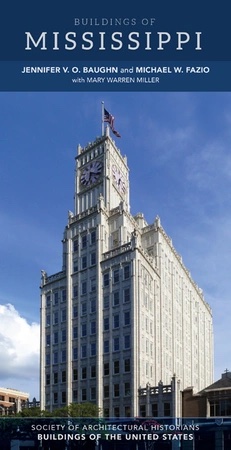
The state’s largest outdoor museum depicts rural Mississippi life of the late nineteenth and early twentieth centuries using relocated historic buildings along with reconstructions. Established in 1978 under agricultural commissioner Jim Buck Ross, the museum is anchored on the east by the Fortenberry-Parkman Farm, moved from Jefferson Davis County in 1981 and restored to a 1920s period. The farm comprises the numerous small buildings of a medium-sized homestead and includes two double-pen mule barns, two corn cribs, a hay and oats barn, a smoke house, a potato house, and a small storehouse, all arranged in their original relationship to each other and to the county road that ran past. The single-pen log house (c. 1860) is wrapped by a deep three-sided porch and sits on a cypress log foundation; battens cover the gaps between the round saddle-notched logs. Later changes enclosed one side of the porch for a bedroom and added a rear ell and a detached kitchen connected by a breezeway. The side-gabled, one-and-a-half-story McDavid Log House (c. 1825) was moved here from Lincoln County in 1995, and its squared, tightly fitted V-notched logs exhibit a higher level of craftsmanship than the Fortenberry House. The Bisland Gin (1892; 1983 reconstructed) from Adams County contains three gin stands manufactured by the Gullett Gin Company of Amite, Louisiana. At the western end of the museum’s “crossroads town” ( pictured above) stands a Carpenter Gothic chapel, built c. 1890 as Epiphany Episcopal Church in Claiborne County’s Hermanville community and moved here in 1984 after the church closed.

